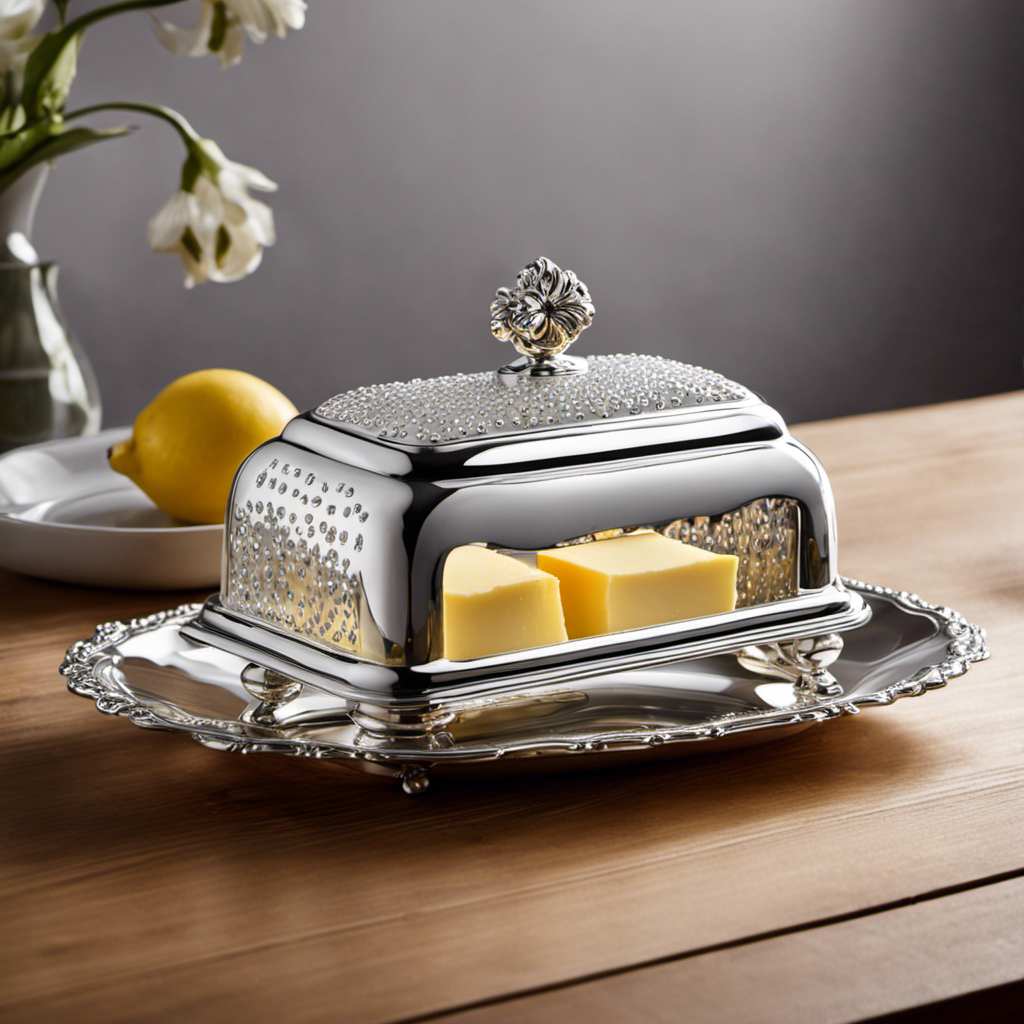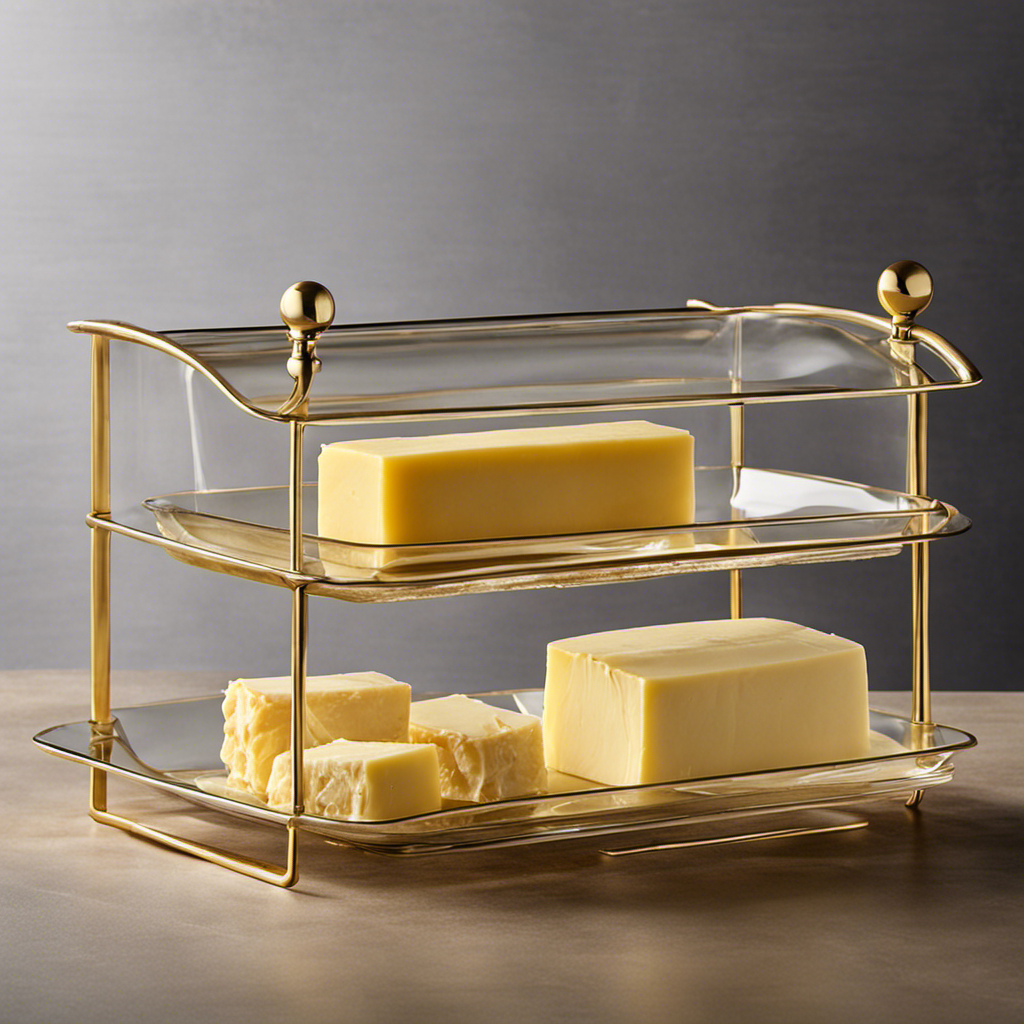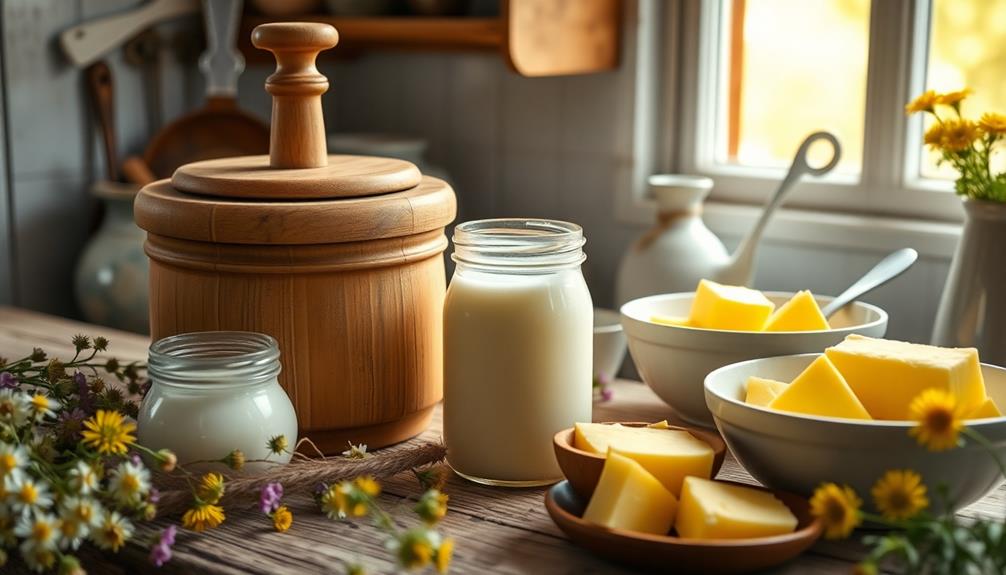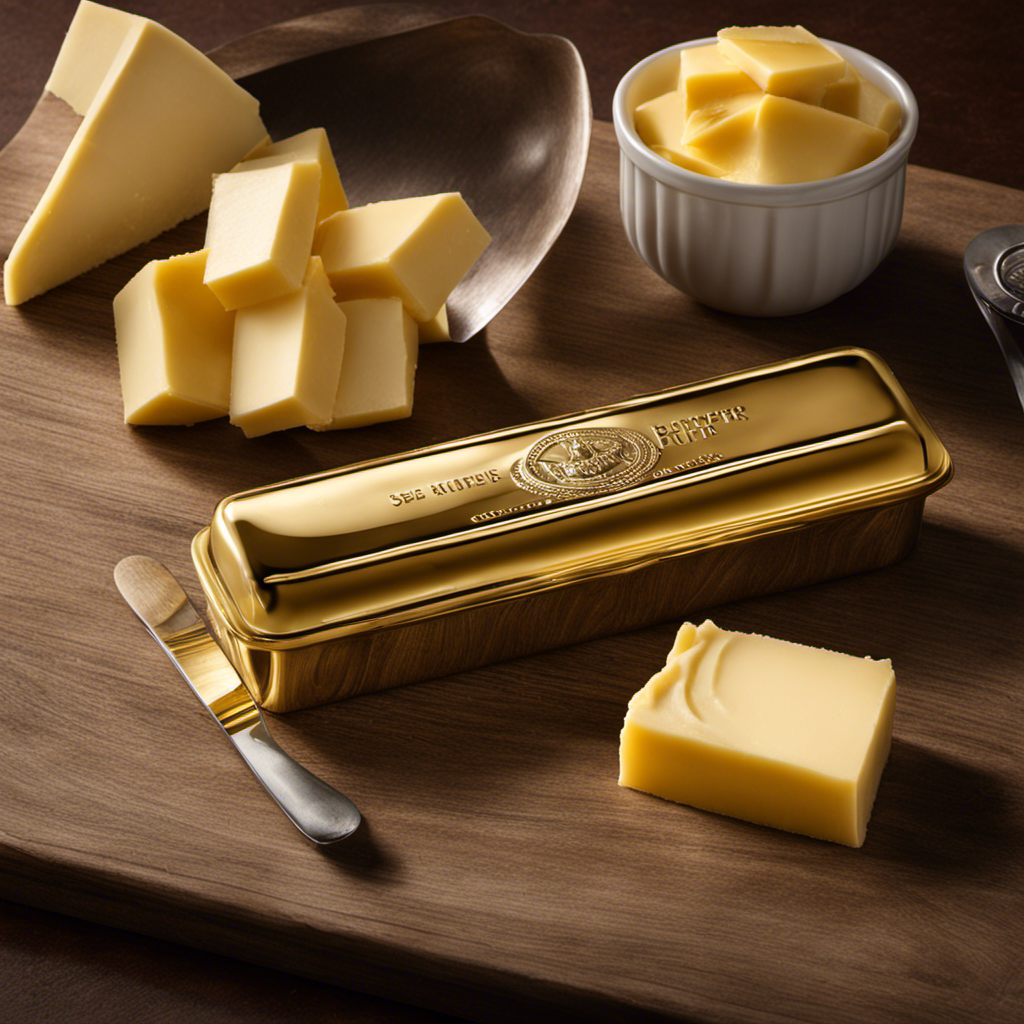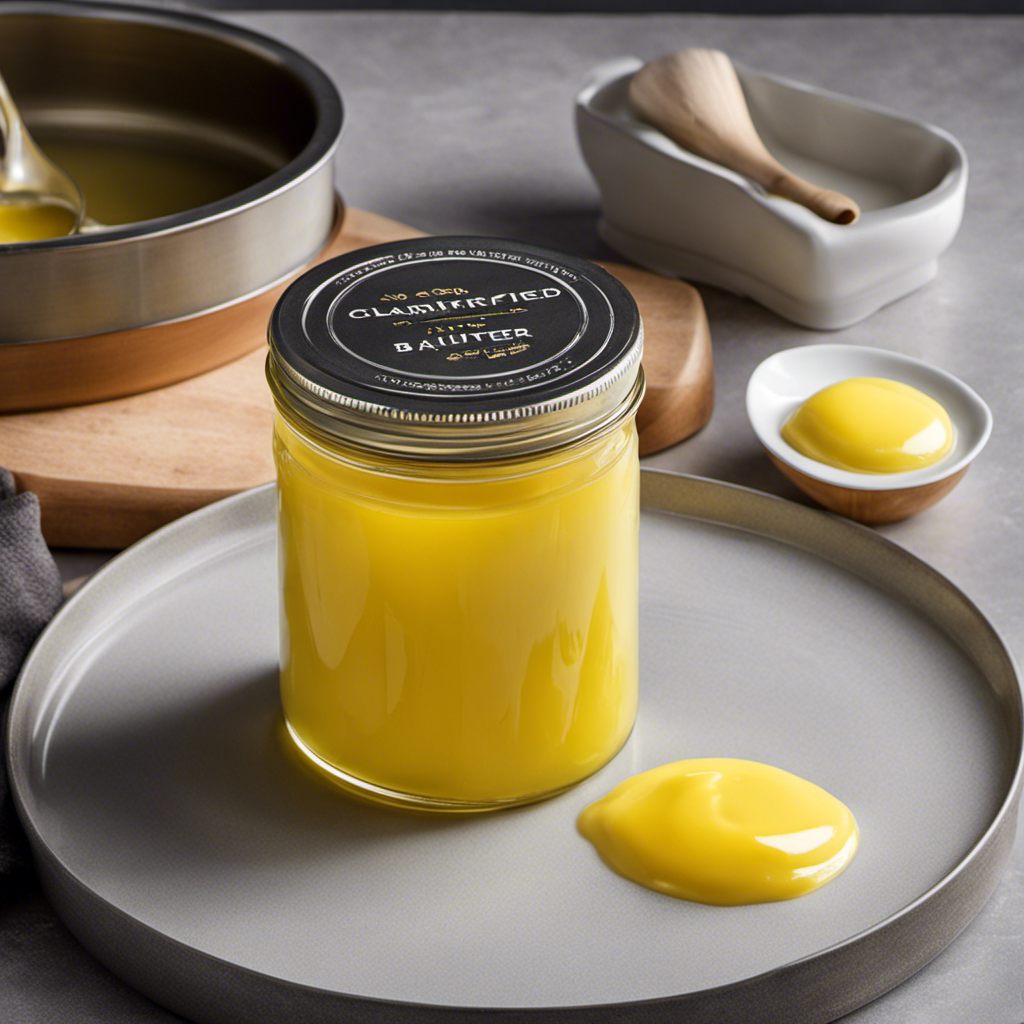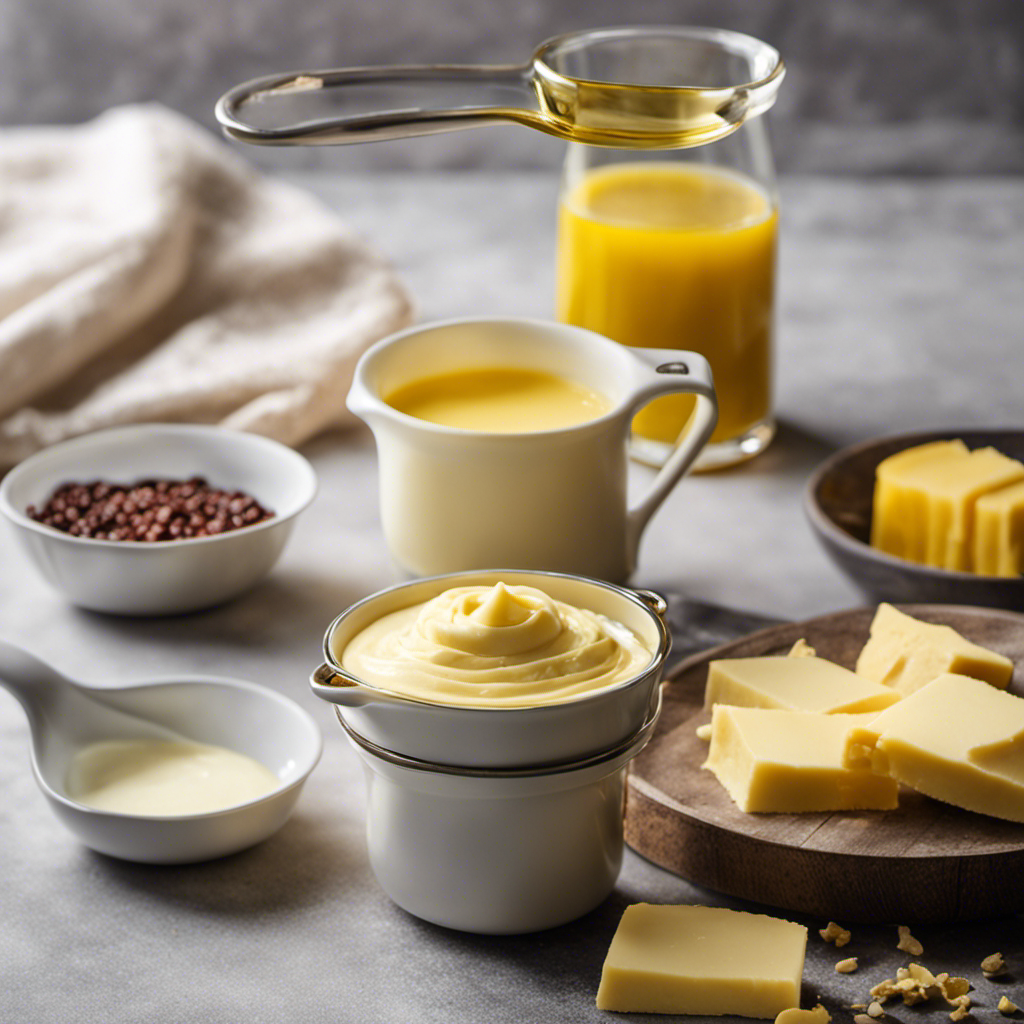Making butter soft can sometimes seem troublesome, but worry no more! I’ve gathered the easiest, fastest, and most classic techniques to ensure you get that ideally soft, easy-to-spread butter.
Whether you prefer the room temperature approach, the microwave shortcut, the stove-top technique, or the gentle water bath method, I’ve got you covered.
So, let’s dive in and discover the secrets to effortlessly softening butter for all your baking and cooking needs.
Key Takeaways
- Softening butter without heat can be achieved by using a rolling pin or pounding/rolling the butter between parchment paper.
- Hot water can be used to soften butter by submerging a heatproof dish containing the butter in a bowl or glass filled with hot water.
- Softening butter at room temperature by leaving it out on the counter in a butter dish ensures it stays fresh and free from unwanted odors or flavors.
- Microwaving butter in short bursts of time, grating or pounding it, are alternatives to achieving desired softness without uneven melting.
Different Methods for Softening Butter
There are several different methods for softening butter. One alternative technique for those without a microwave or stove is to use a rolling pin. To soften the butter using this method, take the cold butter out of the refrigerator and place it between two sheets of parchment paper. Then, using a rolling pin, gently pound and roll the butter until it becomes soft and pliable. This method requires a bit of physical effort, but it is effective in softening the butter evenly.
Another method for quick softening in a pinch is to use hot water. To soften the butter with hot water, fill a glass or bowl with hot water from the tap. Then, place the cold butter in a small, heatproof dish and submerge it in the hot water for a few minutes. Make sure not to let any water get into the butter. After a few minutes, remove the butter from the water and it should be soft and ready to use.
These two methods offer convenient alternatives for softening butter when you don’t have access to a microwave or stove.
Room Temperature: The Simplest Way to Soften Butter
One of the easiest ways to achieve room temperature for your butter is by leaving it out on the counter. This classic method has been used for years and is still effective today. By using a butter dish, you can keep your butter soft and spreadable at all times.
Here are three reasons why using a butter dish is a great way to keep your butter at room temperature:
-
Convenience: Having a dedicated butter dish on your counter allows you to easily access the butter whenever you need it. No more struggling with cold, hard butter straight from the fridge.
-
Freshness: Leaving the butter out in a covered dish ensures that it remains fresh and free from any unwanted odors or flavors that may be present in the fridge.
-
Alternative Uses: Room temperature butter can be used in a variety of recipes, such as baking, cooking, and spreading on toast. Its soft and creamy texture makes it versatile and easy to incorporate into different dishes.
Using a butter dish not only keeps your butter soft, but it also opens up a world of possibilities for alternative uses. So go ahead, leave that butter out on the counter and enjoy the convenience and versatility of room temperature butter.
Using the Microwave: Quick and Easy Softening Technique
Using the microwave is a quick and easy technique to achieve the desired softness for your butter. Compared to the stovetop method, the microwave offers several pros and cons.
One advantage is its speed. Microwaving butter takes only a few seconds, making it ideal for those who need softened butter in a hurry. However, one downside is that the microwave can sometimes melt the butter unevenly or even cause it to become liquid. To avoid this, it’s important to use short bursts of microwave time and check the butter frequently.
Alternatively, if you don’t have a microwave or prefer not to use it, there are other techniques for softening cold butter. These include grating the butter or pounding it with a rolling pin between two sheets of parchment paper. Both methods help to soften the butter without melting it completely.
Softening Butter on the Stove: A Traditional Approach
To achieve the desired softness for your butter, try the traditional approach of softening it on the stove. This method allows for gradual and controlled melting, ensuring that your butter doesn’t become too liquid or lose its texture.
Here’s how you can soften butter on the stove:
-
Using a double boiler: Fill a saucepan with water and bring it to a simmer. Place a heatproof bowl on top of the saucepan, making sure it doesn’t touch the water. Place the butter in the bowl and allow it to melt slowly, stirring occasionally until it reaches the desired consistency.
-
Softening butter in the oven: Preheat your oven to the lowest temperature setting. Place the butter in an oven-safe dish and let it sit in the oven for a few minutes, checking it regularly. Once it starts to soften, remove it from the oven and give it a stir.
-
Remember to keep an eye on the butter while it’s on the stove or in the oven to avoid overheating or melting it completely.
Softening Butter in a Water Bath: A Gentle and Controlled Method
Softening your butter in a water bath is a gentle and controlled method that ensures the butter doesn’t become too liquid or lose its texture. The benefits of using a water bath for softening butter are numerous.
Firstly, it allows for gradual and even heat distribution, preventing any hot spots that could cause the butter to melt unevenly. Secondly, the water bath method keeps the butter at a consistent temperature, which is ideal for achieving the perfect softness.
To achieve the perfect consistency when softening butter in a water bath, there are a few tips to keep in mind. Firstly, make sure to use a heatproof bowl that fits snugly over the saucepan. This will prevent any steam from escaping and help maintain a constant temperature. Secondly, bring the water to a gentle simmer, not a rolling boil, as excessive heat can cause the butter to melt too quickly. Lastly, stir the butter occasionally to promote even melting and softening.
Frequently Asked Questions
Can I Use Melted Butter Instead of Softened Butter in Recipes?
Yes, melted butter can be used as a substitute for softened butter in recipes. However, it may affect the texture and consistency of your baked goods. It’s best to follow the recipe instructions for optimal results.
How Long Does It Take for Butter to Soften at Room Temperature?
To soften butter quickly and evenly, here are some tips: 1) Cut the butter into small cubes. 2) Let it sit at room temperature for about 30 minutes. These steps will ensure perfectly softened butter for your recipes.
Can I Use a Hairdryer to Soften Butter Quickly?
Using a hairdryer to soften butter quickly is not recommended. It can cause the butter to melt unevenly and become too soft. There are better alternatives, such as cutting the butter into small pieces or using a microwave.
Can I Freeze Butter to Soften It Faster?
I’ve heard freezing butter can help soften it faster, but I’m not sure if it actually works. Are there any alternative methods for softening butter that might be more effective?
Is It Safe to Soften Butter in the Oven?
Microwaving butter can be safe but requires caution to prevent melting or uneven softening. Alternatively, using a hot water bath is a better method as it gently and evenly softens the butter without risk of overheating.
Conclusion
In conclusion, softening butter is a simple yet crucial step in many baking and cooking recipes. Whether you choose to let it come to room temperature naturally, use the microwave for a quick fix, or melt it on the stove, there are various methods to suit your needs.
As the old adage goes, ‘Patience is a virtue,’ and taking the time to properly soften butter will ensure better results in your culinary creations. So, next time you’re in the kitchen, remember to give your butter the tender treatment it deserves.
